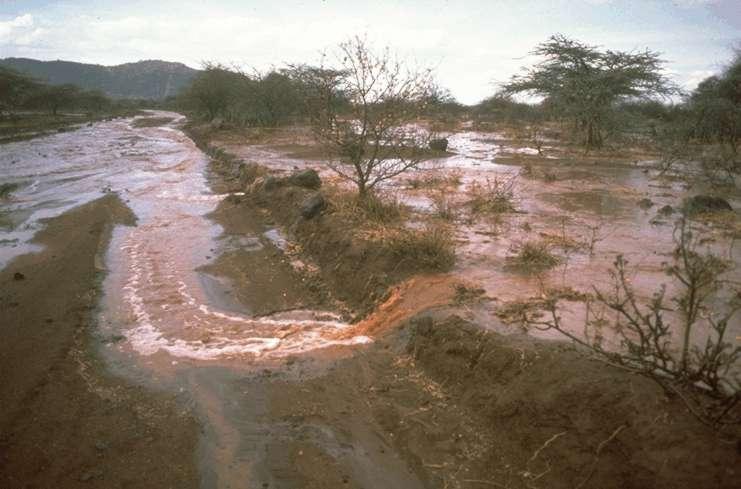Hydrological degradation
Hydrological degradation concerns the effects of degradation processes on water quality and quantity in or on the soil surface:
- Aridification
Decrease of average soil moisture content (reduced time to wilting, change in phenology and lower yield).
- Change in quantity of surface water
Change of the flow regime: flood / peak flow, low flow, drying up of rivers and lakes.
- Change in groundwater / aquifer level
Lowering of groundwater table due to over-exploitation or reduced recharge of groundwater; or increase of groundwater table e.g. due to excessive irrigation resulting in waterlogging and/or salinisation.
- Decline of surface water quality
Increased sediments and pollutants in fresh water bodies due to point pollution (direct effluents e.g. from industry, sewage and waste water in river water bodies) and land-based pollution (pollutants washed into water bodies due to land management practices e.g. sediments, fertilizers and pesticides).
- Decline of groundwater quality
Due to pollutants infiltrating into the aquifers. Human induced pollution is mainly caused by inappropriate land management practices or deposition of waste.
- Reduction of the buffering capacity of wetland areas
To cope with flooding and pollution.

|